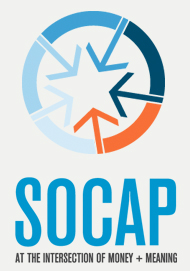Spoiler alert: We are planning to explore the concept of using a 10% gender lens on early stage deals in our next fund.
The data from research led by Peter Roberts of Emory University says that female-run, early stage, post accelerator enterprises are 15% more likely to be profitable than male-run businesses, though they are 40% less likely to get funded*. So, we are being conservative and say we will only weigh the gender lens by 10% when choosing early stage companies for our portfolio.
We expect to see that 10% premium for having a women-run team play in four areas: we will look for them to get a) better terms from vendors because they understand a more relational view of value exchange.

- Photo Courtesy of Jayson Carpenter
We expect to see it in b) higher margins gladly paid by customers because we expect those companies to listen better to what their customers want and give them the things they value the most.
We expect to see the gender lens bonus in c) measurable areas like employee retention, quality of workplace and the ability to hire top candidates because they put a “meaning premium” on working for women-led companies.
And, we expect to see the gender premium play itself out in d) the network of partners and ecosystem players they associate with that creates tangible good will.
We expect that final category to be the place where we will see them build value within a range of partnerships. From evolving past Barney-the-purple-dinosaur deals: “I like you, you like us, which helps build brands;” into “We plan to do more together in the future.” That can lead into joint ventures and other partnered come-to-market strategies, and in relationships that lead to mergers, acquisitions, sales, partial sales, or royalty deals.
Why do it? Well, I just got tired of people saying, “how do we use a gender lens?” I say, “let’s just do it and see what we learn.”
The numbers suggest that picking a group that outperforms is a way to reduce risk and increase financial return. Justice is just a positive externality if you design the financial system properly.
We plan to set up a collective intelligence process using some software that our SOCAP developer Exygy is building. The software will let people weigh in on where (within the categories of vendor relations, employee relations, customer relations, and community relations) that 10% should be looked for, and how its relative weight should be measured across the four different vectors.
* Note: Village Capital is an outlier among the impact accelerators; women-led teams are 200% more likely to get funded through Vil Cap’s peer due diligence process.

Thanks for the article, Kevin.
Could you please provide a link to Peter Roberts’ research? The data is very interesting, and I’d like to take a look at the original source.
After reading Lord Davies’ report to the House of Lords in 2010 (which is a must read for anyone deploying capital), we immediately added “% of board and C-level positions filled by women” to our DDQ. We’ve struggled with how to weight the factor, however, as different situations seem to call for varying weights. After working with the factor for about a year, however, we did decide to impose a *threshold*: any fund or company with less than 30% representation, or with no identifiable business strategy to focus on women, is awarded no points in our analysis. The thinking is that without a critical mass of feminine perspective, there will likely not be a sufficient performance advantage - financial, social, environmental or cultural - to merit consideration when placing capital. Our thought is that the feminine perspective will simply be buried under convention, tradition and inertia. Where the discussion gets interesting is above that 30% threshold…
For example, all things being equal, the gender factor may have a 100% marginal weighting: between two similar opportunities, if one has a high gender lens factor, that will drive the decision. On the other hand, if the business itself (in our opinion) is unlikely to succeed, we don’t really care who leads it or who the target audience is. This is why it has been hard to weight this particular factor, and why I’m a bit surprised that you are comfortable assigning a fixed weighting. It will be great to track this initiative.
I’d love to hear other investor’s perspective. It is a fascinating aspect of investing, and until it is arbitraged away should lead to material outperformance for those who can integrate it into their investing discipline.
Kevin - I applaud the action with learning approach here! As you note, the “numbers are in” - and Peter’s research reinforces that of many others. For instance look at the RBS research from the UK - http://www.gbaforwomen.com/index.php/resources/library/entry/11-rbs/33-women-in-enterprise-a-different-perspective all of the research gathered by Cindy Padnos or the new report from Dow Jones http://dowjones.com/privatemarkets/pm_download.asp.
Will be great to add your experience and learnings to the field.
Jackie
Kevin,
I’m very excited to read about your plans and look forward to learning along with you as the results come in. As you know, Root Capital has been putting more weight behind our gender lens to investing for about a year now. We do this based on similar hypotheses regarding performance, not to mention increased impact in terms of the use of income among female producers at the household level.
Cheers and I look forward to hearing more,
Catherine
Dear Catherine & Kevin, I’d be interested in hearing more about how you apply a gender lens to the investment project circle (from pipeline, screening to due dilligence) for my research on female entrepreneurship & impact investment. Or any other insight you can provide from your experience. Would love to hear from you.